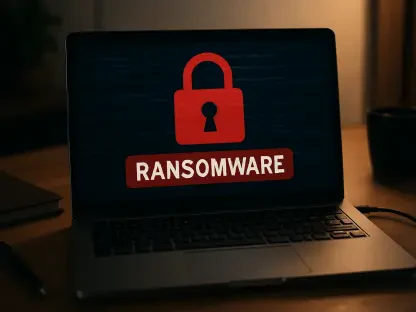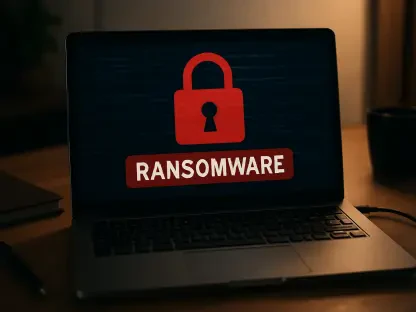As digital threats continue to evolve rapidly, the pressing need for effective credential security has never been more evident. Traditional methods of safeguarding credentials, such as secure storage and multifactor authentication (MFA), are increasingly proving inadequate in the face of sophisticated cyberattacks. This situation is made more alarming by the skyrocketing number of phishing campaigns targeting human vulnerabilities, along with the proliferation of AI tools that pose further threats to password integrity. Among IT leaders and employees alike, there is a growing consensus that a more comprehensive and proactive approach to credential security is necessary to counteract today’s expanding cyber threat landscape.
Current Challenges in Credential Security
Rise of Sophisticated Phishing Attacks
Phishing attacks have reached unprecedented levels, with a staggering rise in the frequency and sophistication of campaigns designed to exploit human vulnerabilities. These attacks utilize deceptive emails, websites, and messages to trick individuals into revealing sensitive information such as usernames, passwords, and financial details. The prevalence of such threats necessitates a shift from relying solely on traditional defenses. While measures like MFA and SSO have provided layers of security, their effectiveness diminishes when users fall prey to phishing tactics. The combination of AI-driven techniques and targeted psychological strategies used in phishing adds to the complexity of maintaining credential security.
Limitations of Traditional Security Measures
Despite advances in technology, traditional security methods remain limited in their ability to protect against evolving threats. Secure storage mechanisms and password policies are often insufficient to withstand complex cyberattacks. Methods such as MFA, though valuable, can be cumbersome for users, leading to decreased compliance and security fatigue. Furthermore, the use of unapproved applications or shadow IT in corporate environments complicates security efforts, obstructing visibility and monitoring critical for managing credentials effectively. This fragmented approach demands a more unified solution that can address the myriad vulnerabilities present across various digital platforms.
The Imperative for an Integrated Approach
Need for Real-Time Solutions
To effectively combat modern threats, enterprises require real-time solutions capable of comprehensive monitoring and rapid response. The adoption of integrated tools that consolidate password management and credential protection is vital. These tools, including advanced systems like Dashlane Omnix™, are designed to offer seamless security across both IT-sanctioned accounts and various SaaS applications. A key element of these solutions is their ability to provide full visibility into user activity, allowing organizations to swiftly identify and address potential risks. By implementing real-time strategies, businesses can enhance the effectiveness of their security measures.
User-Friendly Security Solutions
Another critical aspect of building robust credential security systems is ensuring user-friendly experiences. Many cybersecurity tools are perceived as overly complex or inconvenient, impacting employee compliance adversely. For security solutions to be genuinely effective, they must prioritize ease of use and integrate seamlessly into existing workflows, encouraging user adoption. By simplifying access procedures and reducing the cognitive load associated with security protocols, these solutions can foster better security habits among employees. Ultimately, the aim is to balance robust protection against user accessibility, ensuring comprehensive coverage without sacrificing productivity or creating unnecessary barriers.
Building a Stronger Credential Security Framework
Proactive Credential Management Strategies
Organizations must redefine their credential security approaches to adapt to the ever-expanding threat landscape. A proactive stance involves anticipating potential vulnerabilities and fortifying defense mechanisms accordingly. A unified strategy encompasses regular security assessments, advanced threat modeling, and continuous training to mitigate risks effectively. Embracing automation and AI-driven analytics offers opportunities to predict and preempt security breaches, as these technologies can identify anomalous behaviors and potential threats before they fully manifest. This proactive methodology facilitates seamless security integration, empowering companies to act decisively against emerging cyber threats.
Enhancing Organizational Security Culture
Instilling a strong security culture within organizations is crucial for advancing credential protection strategies. It involves fostering a mindset of vigilance among all employees, emphasizing the importance of safe digital practices. Educational initiatives, ongoing security training, and the promotion of cybersecurity awareness play valuable roles in cultivating a security-first mentality. Encouraging accountability and transparency within teams aids in the swift identification and reporting of threats, contributing to an empowered workforce. By aligning security efforts with organizational goals, businesses can create an environment conducive to sustained safe practices and reduced vulnerability to credential theft.
Conclusion: Addressing the Evolving Threat Landscape
As the digital world evolves at an unprecedented rate, the critical need for robust credential security measures has never been clearer. Traditional techniques like secure storage and multifactor authentication (MFA) are increasingly found inadequate when facing advanced cyber threats. The landscape of digital security is further complicated by a surge in phishing attacks which exploit human vulnerabilities, and by the development of artificial intelligence tools that threaten the sanctity of password security. IT leaders and employees alike are recognizing the urgent need for a more comprehensive and forward-thinking strategy to tackle the challenges posed by this ever-growing threat landscape. This includes the need for dynamic solutions that can anticipate and counteract the ongoing advancement of cyber threats. The pressing demand calls for innovative security practices that go beyond conventional methods to proactively safeguard the integrity of credentials in an ever-changing digital environment, ensuring both individual and organizational safety.









